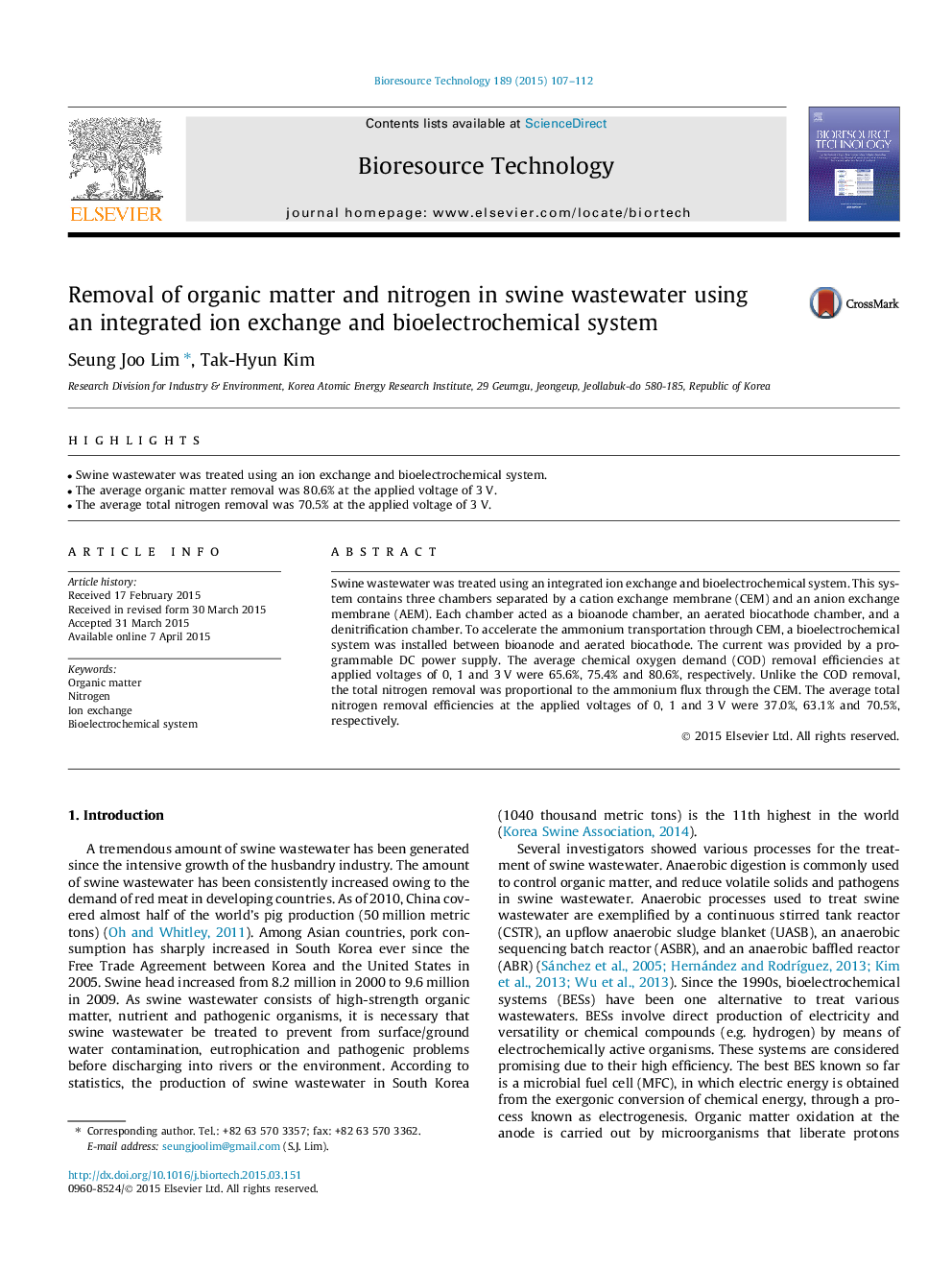| کد مقاله | کد نشریه | سال انتشار | مقاله انگلیسی | نسخه تمام متن |
|---|---|---|---|---|
| 679740 | 1459954 | 2015 | 6 صفحه PDF | دانلود رایگان |
• Swine wastewater was treated using an ion exchange and bioelectrochemical system.
• The average organic matter removal was 80.6% at the applied voltage of 3 V.
• The average total nitrogen removal was 70.5% at the applied voltage of 3 V.
Swine wastewater was treated using an integrated ion exchange and bioelectrochemical system. This system contains three chambers separated by a cation exchange membrane (CEM) and an anion exchange membrane (AEM). Each chamber acted as a bioanode chamber, an aerated biocathode chamber, and a denitrification chamber. To accelerate the ammonium transportation through CEM, a bioelectrochemical system was installed between bioanode and aerated biocathode. The current was provided by a programmable DC power supply. The average chemical oxygen demand (COD) removal efficiencies at applied voltages of 0, 1 and 3 V were 65.6%, 75.4% and 80.6%, respectively. Unlike the COD removal, the total nitrogen removal was proportional to the ammonium flux through the CEM. The average total nitrogen removal efficiencies at the applied voltages of 0, 1 and 3 V were 37.0%, 63.1% and 70.5%, respectively.
Journal: Bioresource Technology - Volume 189, August 2015, Pages 107–112
